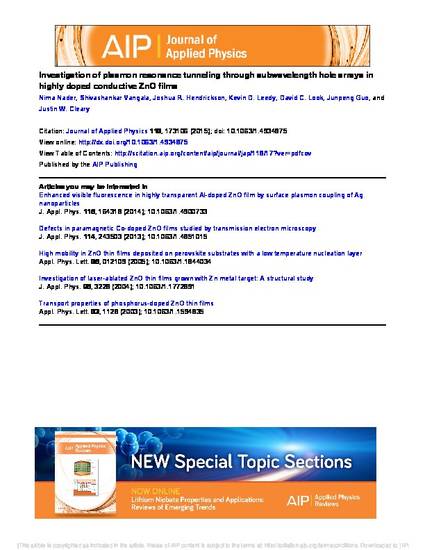
Experimental results pertaining to plasmon resonance tunneling through a highly conductive zinc oxide (ZnO) layer with subwavelength hole-arrays is investigated in the mid-infrared regime. Gallium-doped ZnO layers are pulsed-laser deposited on a silicon wafer. The ZnO has metallic optical properties with a bulk plasma frequency of 214 THz, which is equivalent to a free space wavelength of 1.4 μm. Hole arrays with different periods and hole shapes are fabricated via a standard photolithography process. Resonant mode tunneling characteristics are experimentally studied for different incident angles and compared with surface plasmontheoretical calculations and finite-difference time-domain simulations. Transmission peaks, higher than the baseline predicted by diffraction theory, are observed in each of the samples at wavelengths that correspond to the excitation of surface plasmon modes.
Available at: http://works.bepress.com/david_look/488/

Copyright 2015 Author(s). This article is distributed under a Creative Commons Attribution (CC BY) license.